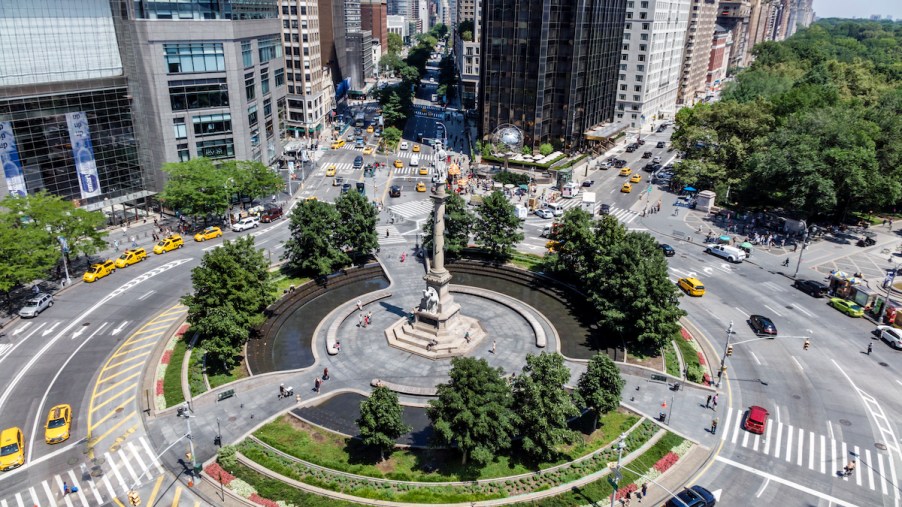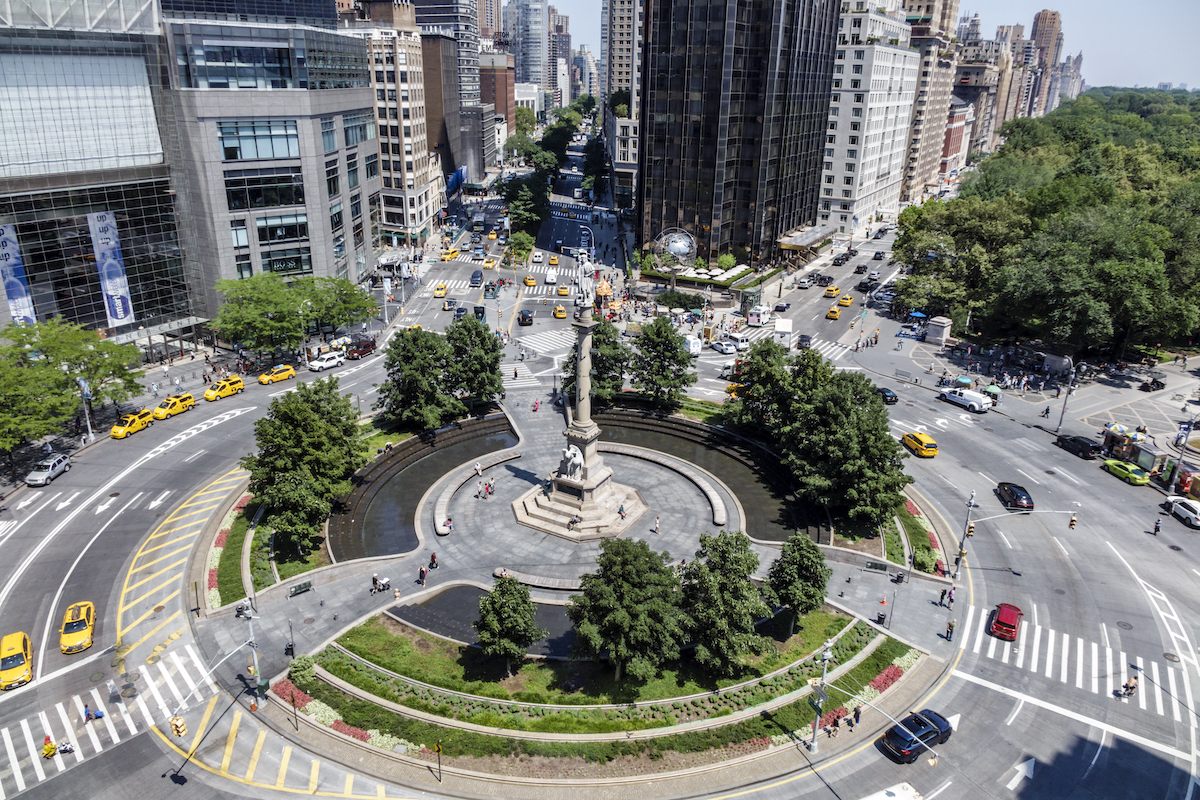
Who Invented the Roundabout?
Driving can be dangerous at intersections because most collisions occur there. These days, roundabouts are gaining popularity nationwide as potentially safer alternatives to traffic lights and stop signs. Who invented the roundabout, and does this type of intersection improve car safety?
What is a roundabout?
You may well have seen them in your neighborhoods. Across the United States, roundabouts are taking over intersections once ruled by traffic lights and stop signs.
So, what exactly is a roundabout? Erie Insurance defines it as “a circular roadway that goes around a raised central island.”
The purpose of roundabouts is to control traffic flow, as all cars move in the same direction around the circle. A roundabout differs from a traffic circle in that vehicles don’t need to stop before entering a roundabout as they do with a traffic circle.
Who invented the roundabout?

The history of the roundabout is long — much longer than the history of the automobile. We can trace the use of roundabouts to at least 18th-century Europe. For example, the famed Arc de Triomphe in Paris, which dates back to 1780, stands at the center of the busy roundabout Place Charles de Gaulle, also known as Place de l’Étoile.
It’s unknown exactly who invented the roundabout as a concept and where the first one appeared. However, we know that the Marquis de Marigny completed massive roads in 1777 at the junction where Place Charles de Gaulle stands today. It even still has roads paved into the shape of a star.
As for U.S. traffic circles, the first is Columbus Circle in New York City. American landscape architect Frederick Law Olmsted designed this roundabout in 1857 as part of a grander plan for Central Park.
Here’s why circular intersections are safer than four-way stops
Why the sudden craze for roundabouts in the United States? It mostly boils down to safety. Study after study has shown roundabouts are less likely to result in fatal car crashes than traditional intersections.
Roundabouts provide enhanced safety in numerous ways. For starters, entering the circle requires drivers to slow down. Traffic in roundabouts generally moves under 20 mph, so if a collision occurred, it would be much less likely to cause serious injury. (Of course, crashes are also easier to avoid if vehicles move slowly because lower speeds allow cars to stop more quickly.)
In addition, roundabouts and traffic circles have the advantage over traditional intersections in that all vehicles move in the same direction. That means they’re much less likely to collide than if someone were to run a red light. Cars in roundabouts are also much less likely to be involved in dangerous head-on collisions.
Then there’s the question of conflict points — places at an intersection where two vehicles could collide. Traditional “T” intersections have a whopping 32 conflict points, while roundabouts have only eight. The advantages of the latter are clear.
Finally, we can’t forget about the potential danger for pedestrians. It turns out they’re also safer in roundabouts. Rather than having to worry about crossing two lanes of traffic moving in opposite directions, pedestrians at roundabouts only need to cross one stream of traffic at a time. It also helps that all vehicular traffic is moving in the same direction.
Cities continue to install roundabouts for other reasons as well. Improved traffic flow cuts down on delays and emissions. Also, roundabouts are less expensive to maintain because they don’t require the use of traffic signals. All in all, there’s plenty to recommend the roundabout.


